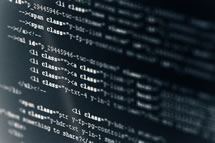
By now everyone knows that open-source software can be a cheaper alternative to proprietary software, though there are costs associated with hosting and support. So, how can you tell if open-source software might be a good fit for your campus?
According to Ken Ingle, executive director of emerging technology at Central Piedmont Community College in Charlotte, N.C., there are a set of considerations every school should use to determine its fit with open source, as well as a rubric to make implementation as effective as possible.
“We’ve come a long way since the stereotype of a bearded nerd sitting over a computer in a dark basement somewhere using code,” said Ingle during the “Making the Case for Open Source” session at the 2012 EDUCAUSE conference in Denver, Colo. “By now, most of us know that open source is free software, shared and developed by a community for the betterment of the community as a whole.”
Perhaps surprisingly, many successful companies currently use open source, noted Ingle, including Facebook, Google, IBM, and Microsoft. Some common applications of open source can be found in Linux-based data centers, Firefox and Chrome applications, Gmail and Office 365 cloud solutions, and the Mac OS desktop.
However, Ingle also noted that just because the software is free initially doesn’t mean there aren’t costs associated with it.
“Think of it as the difference between a free cat and a free beer,” he said: “The cat may be free, but you have to pay for support and upkeep; there are really no costs associated with a free beer, except maybe a hangover.”
Sifting through the hype
According to Ingle, it’s important to begin the conversation about open source by separating fact from fiction…
Open source enables innovation: “This isn’t a myth, but a tenet,” explained Ingle, “and in fact, open source has allowed mobile devices to flourish. Without open source, there wouldn’t be mobile movement.”
Open source provides enhancements: This is especially true as it works with APIs (Application Programming Interfaces) and cuts out some of the limitations associated with proprietary software. It also allows for tweaking and customizing.
Open source allows for scalability: “This is a huge plus with open source,” said Ingle. “I’m not saying that you can’t scale close-sourced software, but there are always complications associated with it.” Ingle used the example of Moodle (open) versus Blackboard (closed), two solutions that are currently used on his campuses. “With Moodle we have two front-end servers, one back-end, and one used for backup, and we’ve had no problems with upgrading. With Blackboard, we have nine servers, rising costs, and major software issues.”
Open source is free: While the direct cost of open source is free, Ingle stressed that you still need staff who can successfully operate, implement, integrate, and install the software.
Open source bypasses lock-in: One of the main risks associated with closed source is that the specifications or requirements of the software are based on the vendor. Also, many vendors treat data as proprietary, making it difficult for customers to extract their data. Closed source also relies on a standard format. With open source, explained Ingle, there are open standards, easy integration, and no proprietary format. However, interoperability is not perfect.
“It’s also important to note that many campuses and districts use so many different micro-apps and cloud services that it’s becoming less commonplace to have one giant solution to support every need,” he said. “Rather, it’s more of a collage of solutions that needs a broad connector.”
Open source needs minimal maintenance/support: “Not true,” said Ingle. “This is the one disadvantage with open source. With many vendors, support is included. Yet, there are now many support packages you can purchase with open source; for example, redhat.”
Open source relies on community: “This is another huge advantage when considering open source, because with a large community comes support and an exchange of ideas. You don’t get that with closed source.” Examples of large open source communities include Github and Python.
“I don’t want you to think that I’m trying to demonize all closed source software,” explained Ingle, “Just don’t use closed source at the expense of open source. In today’s school climate of declining budgets and staff shortages, you really can’t afford to be uneducated about open source.”
Smart considerations
To help make the transition to open source, Ingle recommends using a list of considerations before implementation:
- How long has the open source maintainer been in use/been around? What’s the reputation of the open source community?
- Does the solution support a potential move to an open cloud option?
- Do you have the internal resources to support an open-source solution?
- What are the platform costs for the solution?
- What API and integration capabilities exist?
- What are the commercial support options available?
“Exactly how do you assess an open-source community?” asked one attendee.
According to Ingle, you should start by looking at the code check-ins.
“Look for security patches and updates, release history and schedule. Is it standardized? Are they operated by a closed-governance board or the community? These are all important considerations.”
- 25 education trends for 2018 - January 1, 2018
- IT #1: 6 essential technologies on the higher ed horizon - December 27, 2017
- #3: 3 big ways today’s college students are different from just a decade ago - December 27, 2017
